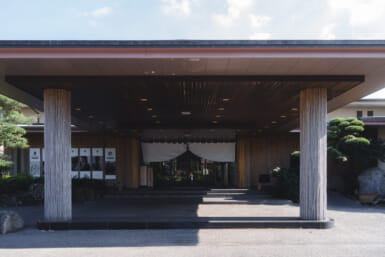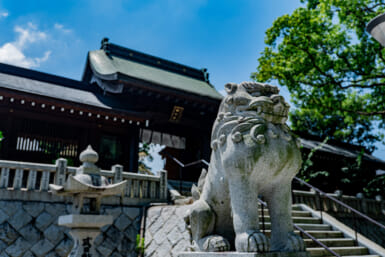by Jay Revelle, with information provided by JCE Autos
For many expats, living in Japan comes with many amazing ‘firsts’—the first ride on a shinkansen, or the first stunning view of Mt. Fuji. While these ‘firsts’ make for great experiences, others might not have been so easy, such as the first crowded train commute or the first closet-like apartment rental requiring a hefty deposit and key money payment. These more complicated ‘firsts’ can sometimes come complete with their own brand of confusion that can often take a lot of time to decipher. Furthermore, dealing in a language such as Japanese is, for many, a monster all its own. Thus, certain tasks that would often pose no problem in one’s home country, such as signing a lease agreement, getting a bank account, or visiting the local city hall, can suddenly seem like a logistical nightmare. As such, there is one ‘first’ that is sometimes perceived as just too overwhelming to undertake—the first car.
That’s where JCE Autos comes in. JCE is Tokyo’s leading car sales agency and is run by a team of seven multilingual executives poised to help those embarking on the quest for their first car in Japan escape the proverbial heart attack and lesson in patience. JCE’s deep well of information, vast inventory of used and new cars, and one-stop approach to car ownership in Japan is the perfect bridge for those considering hitting the streets in a four-wheeled friend.
Without further ado, welcome to the ins and outs of car ownership in the land of the rising sun.
Driver’s Licenses
For many, this is the first step, and although for the first year of one’s existence in Japan an international driver’s license usually does the trick, it is inadvisable for the long term. One must eventually take the plunge and get a real Japanese license. Those who do will not only be legally allowed to drive, but will also have a really cool-looking ID to flash around when they visit friends back home. However, don’t start running to the licensing office just yet—different rules apply for different countries, and depending on your home country, you might have to take a driving test. For more information, it’s best to contact a local licensing office and see what’s required. However, the good news is that there are many relocation companies around Tokyo that specialize in helping people transfer their licenses from that of their home countries to Japanese licenses. In JCE’s case, a one-stop service basically guides customers through the entire process. Initially, however, take a look at your foreign license. Does it have an issue date? If not, you will need to provide proof of the first actual issue date of the license from the issuing country. The licensing office will need to know exactly how long you drove for in your home country. Additionally, regarding knowledge of street signs, books on these rules and the meanings of the various road signs are available in English from the JAF (Japan Automobile Federation) for ¥1,000. Japanese language skills are not necessary to drive in Japan.
Car Selection
The first step here is determining what you want and what you need. If you know exactly what you want, then all that is needed are a few test drives and some preliminary research into the makes, models, grades, years, and options you think are best. If you are not sure what types of cars are available in Japan, a few key questions posed to yourself based on your budget and needs can help determine the perfect car for you. The main points to consider are: what will you use the car for? Cruising the city streets with friends or weekend trips to the mountains or beaches? Are you looking for an adrenaline booster or a subdued kei van to get the family around? Once you have decided what you want the car for, cost comes into the picture. The good thing here is that choice in Japan is off the charts. Whether it’s a conservative luxury sedan or a pimped-out caddy with hydraulics and a chain steering wheel, JCE can find it, and it will probably be cheaper and in better condition than what you can find in your home country.
preliminary research into the makes, models, grades, years, and options you think are best. If you are not sure what types of cars are available in Japan, a few key questions posed to yourself based on your budget and needs can help determine the perfect car for you. The main points to consider are: what will you use the car for? Cruising the city streets with friends or weekend trips to the mountains or beaches? Are you looking for an adrenaline booster or a subdued kei van to get the family around? Once you have decided what you want the car for, cost comes into the picture. The good thing here is that choice in Japan is off the charts. Whether it’s a conservative luxury sedan or a pimped-out caddy with hydraulics and a chain steering wheel, JCE can find it, and it will probably be cheaper and in better condition than what you can find in your home country.
Cost and Purchase
Generally speaking, however, for a first car, despite the urge to just give in to impulse and get the Ferrari, it might make sense to test the waters with a reasonably priced Japanese market car. These are very reliable and designed for driving under Japanese road conditions. The great thing is that in Japan, there are some amazing cars available for a great price—models you might never consider in your home country. Additionally, countries such as Australia and the UK have very good personal import schemes, and if you qualify to take a car back with you, it can be financially beneficial to buy a nice luxury car here, drive it during your time in Japan, and take it with you when you return to your home country.
Related Terminology:
kei: Literally meaning ‘lightweight,’ in this case kei refers to a class of
vehicles, such as cars, vans, and pickup trucks, that are small, economical,
and with engine sizes of 660cc or less. All kei vehicles can be
identified by their yellow license plates.
shaken: Contracted name (normally jidōsha kensa tōrokuseido
(自動車検査登録制度) given to Japan’s vehicle inspection program on
motor vehicles over 250cc in engine displacement.unten menkyosho: Japanese for ‘driver’s license.’
hokensho: Japanese for ‘insurance paperwork.’
Insurance
As with most anywhere, car insurance in Japan is calculated annually based on the type of car driven, the car’s value, the owner’s age, and the color of the owner’s driver’s license, which indicates experience level. Unfortunately, the first year of paying for insurance in Japan won’t allow for any discount; however, if you maintain a clean driving record, the annual premium will get progressively cheaper. This is an area where JCE’s assistance can help out greatly, as the team can provide car insurance from nearly every insurance company in Japan.
Shaken
The shaken’s reputation is sometimes notorious as being both strict and costly. However, the positive reality of shaken is that this is what has kept the used car you are likely about to purchase in such good condition all these years. Simply put, shaken is a government-mandated safety and maintenance check (one of the strictest in the world) that consists of two parts, eventually evidenced by one round and one square sticker, which are placed on all shaken-compliant vehicles. In essence, shaken is the key to the widespread availability of cheap, well-maintained, older or late model cars in Japan—it’s a meticulous maintenance schedule, making the country a gold mine for used cars.
The first part of the shaken process consists of a thorough and extensive preliminary inspection by a certified mechanic. At this time, routine maintenance is also often performed, such as oil and filter changes, wiper blade replacement, etc. If any obvious problems regarding safety are found, they must be fixed before the testing facility can issue the round-type check sticker. However, for those who are automobile-savvy, these initial checks can also be conducted on your own, but a certified mechanic is still the only one who can issue the round check sticker.
For the second and final part of the shaken process, which results in the square sticker, the car must be taken to a government testing station, where a similar extensive check will be performed. If the car fails this check, the car must be repaired and eventually brought back, where it will go through the procedure again. This is where costs can mount up. A shaken test costs about ¥70,000 each time, not including anything that needs to be repaired and replaced. Furthermore, shaken is performed every two years for most used cars. So, unlike in some Western countries, where safety certifications can cost around just ¥4,000 and can last untilownership changes, a ¥70,000-plus inspection fee can substantially add to your expense. Furthermore, during this inspection, you must also pay compulsory insurance and weight tax, and there is nothing optional about the shaken test process—it is compulsory. You cannot drive a car without it, nor can you drive with a shaken that has expired. If you did and if an accident were to happen, insurance companies are not obliged to cover you, and further, if you are stopped by police, you will lose your license on the spot.
For those who are thinking, “This all sounds pretty easy. I thought I’d be pulling my hair out by now,” think again. It’s almost ironic that one of the biggest obstacles to owning a car is what you will do with it when it’s not even being driven—parking. One of the biggest expenses of owning a car in Tokyo is the storage. If you are lucky enough to have parking included with your apartment or home, you are already halfway there. But if not, parking your car in Tokyo could run from around ¥30,000 to ¥60,000 a month, depending on where you live. At this point, are you wondering if “maybe it’s time for a really nice bicycle; something carbon and really sporty?” I’d almost agree, but it isn’t quite the same as cruising to Kamakura in a BMW, now is it?
Hitting the Streets
While no guide to car ownership can cover all the information out there, luckily, there are many top-notch firms in Japan that specialize in helping expats adjust to life overseas, and JCE is one of them. The company’s one stop approach to getting on the road can be a beacon of light to those already busy with a bustling life in Tokyo. Whether it’s a car for the odd weekend trip or an exotic machine meant to rapidly increase your heart rate, JCE Autos can put you in the driver’s seat without any hassle or confusion. When considering this ‘first,’ make it the bearer of some of your greatest memories—the freedom of owning your own set of wheels in a foreign land—as you continue cruising the road of life, Japanese style.
For more information, please contact: JCE Autos
Kamiyacho MT Bldg. 14F 4-3-20 Toranomon, Minato-ku
Tel: 03-6715-8621
[email protected]
www.jce-autos.jp
This article was originally published in Tokyo Weekender in 2010










